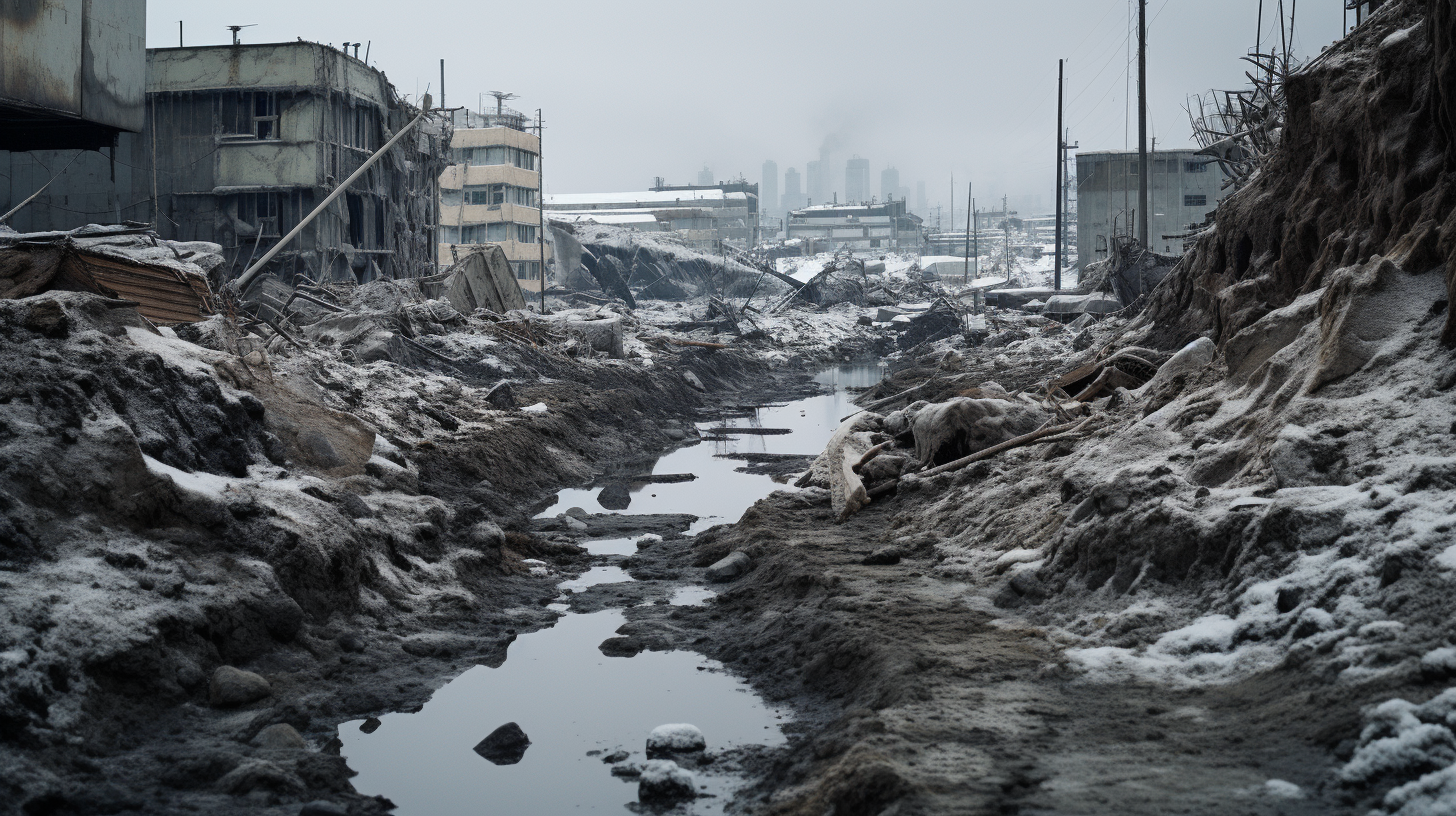As the sun refuses to rise over a subdued horizon, we witness another chapter in the sorrowful saga of our planet’s deterioration. The permafrost – once an impermeable bastion of ancient secrets and a relic of prehistoric eras – now yields to the relentless march of climate change, exposing a plethora of enigmas from its icy embrace in a phenomenon as intriguing as it is harrowing.
Unearthing Eons Past
Our quest for knowledge often leads us to the most desolate corners of the Earth, but it is seldom that the Earth itself lays bare the archives of its history. With the thawing of the permafrost, a time capsule spanning thousands of years has been unveiled, revealing not just ice cores and frozen fauna but also a chilling testament to the climate’s volatility and the fragility of life.
‘Each day uncovers what years of scientific endeavor could not fathom,’ notes Dr. Aurelia Vasquez, a prominent paleoclimatologist who majored in the study of cryogenic sediments. ‘We are spectators to a history retold by the thawed remains of mammoths, microorganisms, and mankind’s own ancient imprints.’
The Twisted Bounty of Thaw
The melting permafrost unveils not just artifacts and extinct species, but also unravels a Pandora’s Box of ancient pathogens and greenhouse gases. Methane and carbon dioxide, long entrapped in this once-frozen sanctuary, now seep into the atmosphere, binding the fate of the past with that of our own exacerbated ecological demise.
Explorations have stumbled upon settlements preserved in time, offering a glimpse into the lives of our ancestors and their climatic challenges. These discoveries, as captivating as they are, come with an undercurrent of the morose. We are explorers on a sinking ship, intoxicated by the contents of its flooded cargo hold.
Reflections in the Thaw
Our generation witnesses what may be viewed as paradoxical fortune wrapped in a global crisis. ‘We extract knowledge, viruses, and carbon in equal measure,’ remarks an environmental archaeologist, her shovel piercing the muddy surface as ancient ice relinquishes its solidity. Such reflections compel us to question not only the lessons preserved in these icy depths but also our role in perpetuating the cycle of climate calamity.
The Microbial Meltdown
In the grand scheme of thawing permafrost, the revival of dormant microscopic life adds another layer to the unfolding narrative. Pathogens, in their timeless sleep, emerge to confront an unprepared world. Our own biological vulnerabilities are highlighted by these once-contained threats, resonating with a visceral fear of the unknown and the uncontrollable.
Indigenous Wisdom Ignored
As modern science scrambles to catalog these shifting realities, indigenous narratives that once warned of disturbing the permafrost’s slumber fade into the background, their cautionary tales drowned out by machinery and the greed for discovery. The wisdom held in these traditions, undervalued and overlooked, haunts us with its prescience.
A Legacy Beyond Time
The permafrost does not merely unearth relics but also raises profound philosophical and ethical questions. What legacy do we leave in its icy layers? As carbon footprints deepen and permafrost maps are redrawn, our anthropogenic inscription becomes chillingly evident.
Sub-cultures and the biomes they once revered morph into tales and textbooks, a legacy of loss dictated by environmental collapse. Yet, even as we gaze upon these preserved scenes of a bygone world, we must ensure they remain cautionary tales, not previews of further desolation.
The act of unearthing the permafrost’s archive is a complex ballet danced on a stage of melting ice. It is an enlightening, albeit stark, reminder of the transience of dominance, whether it be that of a virus, a mammoth, or humankind itself.
Thus, our legacy is one of revelation as much as devastation; a continuity of life and its ceaseless alteration. The permafrost, in revealing its treasured and terrifying legacy, underscores the urgent narrative of our time – a dystopian testament and a reflective mirror held up to humanity.
What We Unearth in Ourselves
In the end, the permafrost compels us to unearth something within ourselves – a renewed understanding of our place in this world and our responsibility towards its future. Let this be not just a revelation of the past, but a reflection of what can be mitigated for the sake of the futures that follow.
